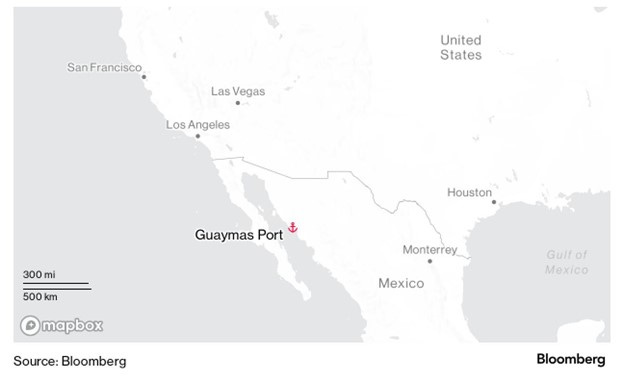[Three more short posts of geographical ‘things’ that have interested me in recent days. They cover an interesting geopolitical area, and global systems and trade.]
1. China/Russia/North Korea
The governments of Russia, China and North Korea are holding talks over an area of shared border - specifically navigation rights along the River Tumen (see map). The river forms a significant portion of the China/North Korea border until it reaches the village of Fangchuan, in China. At this point the border becomes one between North Korea and Russia for 15km, before the river flows into the Sea of Japan. This means that any sea vessels wishing to enter China via this route must flow between North Korea and Russia. Up until recently, this border has been a contentious issue between China and Russia, dating back to the 19th century.
Will this continue to be the case following Russia’s need for economic and political support for its war in Ukraine from China, and following President Putin’s recent trip to North Korea?
2. Nvidia – the world’s largest company. But what does this mean?
Nvidia, a maker of electronic chips, is now the world’s largest company by market capitalisation (value). A 10% gain in its value over the last few weeks has taken the company to a $3.35 trillion market value, more than Microsoft and Apple.
But, is this how we measure the world’s largest companies? What other indicators could we use? Here is a diagram from Chartr.
Nvidia is only the 37th largest S&P 500 company by revenue, but it is the 4th most profitable, superseded by the tech companies of Microsoft, Apple, and Alphabet (Google).
Being ‘the world’s largest company’ is not that straightforward.
3. Guaymas, Mexico
The port of Guaymas in Mexico is seeking to establish itself as a transport hub that Mexican officials say will accelerate nearshoring in the region (see below for definition of nearshoring). The Governor of Sonora state, Alfonso Durazo, has recently announced that the port in the northwest region of Mexico would be revamped under a deal signed with the Port of Antwerp-Bruges International in Belgium and backed by a $220 million investment from the federal government.
Previously, the port was mainly a hub for moving minerals out of the region, but it now wants to upgrade. Ford Motor is one of the first companies looking to take advantage. In late June 2024, the carmaker announced it will export 2,000 cars to Chile from the port by the end of the year.
[Near-shoring is a strategy that involves a manufacturing company transferring all or part of its operations to a nearby country. The purpose is to take advantage of lower costs while maintaining proximity to the home country, often one that shares a border with the home country. Near-shoring has several benefits, including lower costs, similar time zones, and cultural similarities. N.B. An article on this issue is coming in Geography Review in September.]
Up until now, Ford’s cars produced in Mexico were transported by road from Hermosillo in the northwest of the country to Veracruz in the southeast. Then they were loaded onto ships to Panama. Ford estimates that switching to exporting from Guaymas will reduce highway transport by 3,300 km per vehicle.
Mexico’s government is hoping to capitalise on nearshoring in the future, which could help the country’s GDP gain an additional 3% in the next five years. They want US, European and Asian businesses to be able to have a safe and sustainable location close to the American border at a reduced cost.
Will this feature in the upcoming US presidential election?






